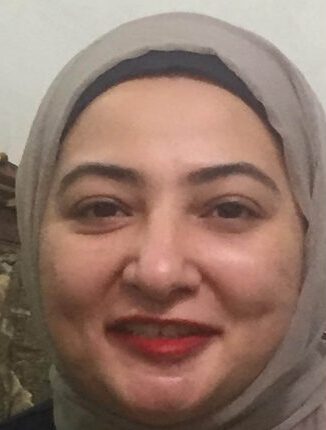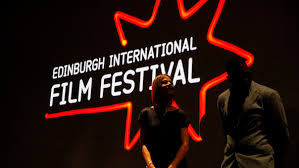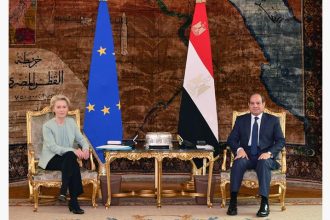In the ancient streets of Edinburgh, where historic stones echo with the sounds of theatre, comedy, and music, the world is witnessing one of the boldest calls for peace: the 2025 International Fringe Festival. The world’s largest arts gathering, with more than 3,000 performances, has in its current edition transformed into a vibrant arena for debate on peace, with Palestine and Ukraine at its heart.
Amid the lights and satirical performances, Palestinian artist Sami Abu Warda’s Palestine: Peace de Resistance stands out. Blending historical narrative with dark comedy, he delivers an absurd yet piercing response to the Palestinian tragedy. His biting satire of colonialism is more than art—it is an act of resistance that transforms suffering into a space for dialogue and reflection. Another performance, Palestine Stands Up, features Palestinian artists sharing their stories through comedy that provokes laughter but leaves a lasting ache—raising a profound question: can peace emerge from laughter?
The festival has not been untouched by politics. During an event attended by Scotland’s First Minister, John Swinney, Palestinian protesters voiced opposition to his government’s support for Israel. The demonstrations were strong enough to cancel several shows—reminding the world that art does not exist apart from politics, but reflects it through the perspective of peoples rather than governments.
Yet Edinburgh is not alone this year; Europe as a whole has become one vast stage for peace. At the Cannes Film Festival in May 2025, the Palestinian pavilion returned with strength, affirming that images can resist silencing. Three documentaries on the conflict were screened, including one focusing on Palestinian journalists who face war armed with cameras instead of rifles. In a moving moment, Jury President Juliette Binoche paid tribute to Palestinian photographer Fatima Hassouna, calling on the world to condemn the blockade of Gaza. Meanwhile, Ukraine was honoured through the awarding of the French Order of Arts and Letters to producer Volodymyr Yatsenko—a gesture affirming culture’s resilience in the face of destruction.

In July, the Festival d’Avignon in France opened its stages to Ukrainian artists envisioning reconstruction. Since 2022, the festival has dedicated space to Ukrainian art, but in 2025 the message was even clearer: here, art is not simply performance but a collective rehearsal for imagining a post-war future. One highlight was a panel entitled The Roles of International Festivals Today, which gathered organisers from across continents to debate the role of culture in a conflict-ridden world.
By contrast, the Berlinale 2025 in Germany faced a political storm, after the Palestinian Campaign for the Academic and Cultural Boycott of Israel (PACBI) called for its boycott over alleged “complicity with Israel.” Here, the debates surpassed cinema itself, confronting a larger question: can art ever be neutral? Or is neutrality in times of bloodshed nothing but an illusion?
Even smaller festivals echoed the same spirit. Serbia’s Festival of Arts and Human Rights (June 2025) featured workshops, plays, and films that addressed Palestine and Ukraine while linking them to broader themes of truth, justice, and freedom. The conclusion was clear: peoples are searching for genuine peace, and art offers the path forward.
Why, then, are festivals able to say what political conferences cannot? Research provides an answer. A study from SIT University affirms that cultural festivals foster dialogue and mutual understanding far beyond the language of political interests. On ResearchGate, scholars argue that in post-violence contexts, the arts help repair social ties and nurture empathy between former enemies. Meanwhile, the Oxford Research Encyclopedias emphasise that while art can be harnessed for violence, it more often becomes a powerful instrument of peace, creating shared narratives that dissolve the boundaries of “us” and “them.”
The picture grows sharper in other studies. Research at Nova Southeastern University highlights that art in conflict zones must be recognised in all its diverse forms, and its true value lies in its independence from biased state politics. A study on reconciliation in Bosnia adds that art builds peace “from below”—from the people themselves—whereas politics, imposed “from above,” often fails to reach the human heart.
Here lies the stark contrast: political conferences are closed arenas, dominated by governments and their alliances, while artistic festivals are open spaces that amplify the voices of artists, activists, and ordinary people. Politics deafens; art restores hearing with voices that cannot be silenced.
In the end, if 2025 has taught us anything, it is that art is neither luxury nor ornament, but a true force for peace. The festivals of Edinburgh, Cannes, Avignon, Berlin, and Serbia have all demonstrated that culture is stronger than political propaganda. If we truly want lasting peace, we must first listen to the artists—before the politicians.
Dr. Marwa El-Shinawy – Writer and Academic


